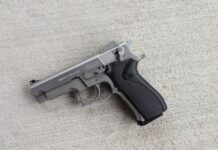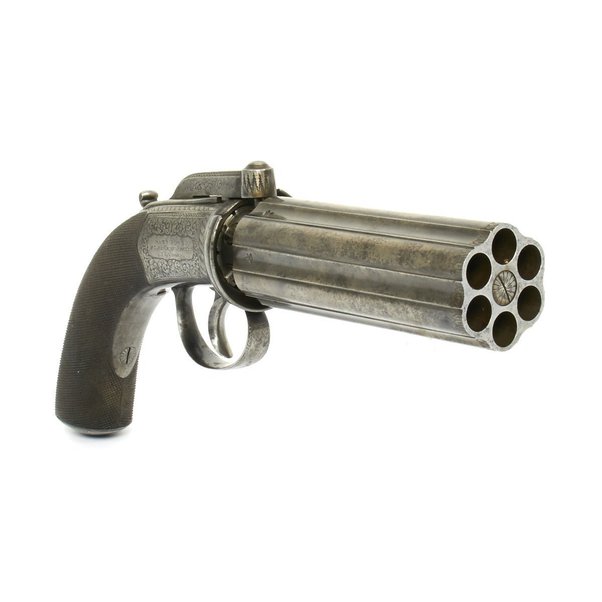
Early repeating firearms are fascinating to me. Whenever someone says that the Founding Fathers could never picture a repeating weapon, I laugh. Ever since early firearms were created, we have looked for ways to make them more effective and efficient. One of the early methods that made its way to the modern world was the pepperbox.
The pepperbox is a multi-barreled gun that’s similar to a revolver. It features multiple barrels that often rotate around a firing device, although that’s generalized. Several designs used fixed barrels with rotating firing pins, although rotating barrels are more common. They differ from revolvers in the fact that each barrel is also a cylinder. The name comes from the gun’s multi-barrel look that often looks like the top of a pepper shaker.
What Is a Pepperbox
A pepperbox can be any type of firearm. There were rifle and shotgun variants, but the most common was a handgun. Multiple barrels got quite heavy, and extending them to long gun lengths would make quite the weapon. Pepperbox weapons differ from volley guns in that they only fire a single barrel at a time. Arguably the first pepperbox was a modified volley gun from the 15th century designed to fire a single barrel at a time.
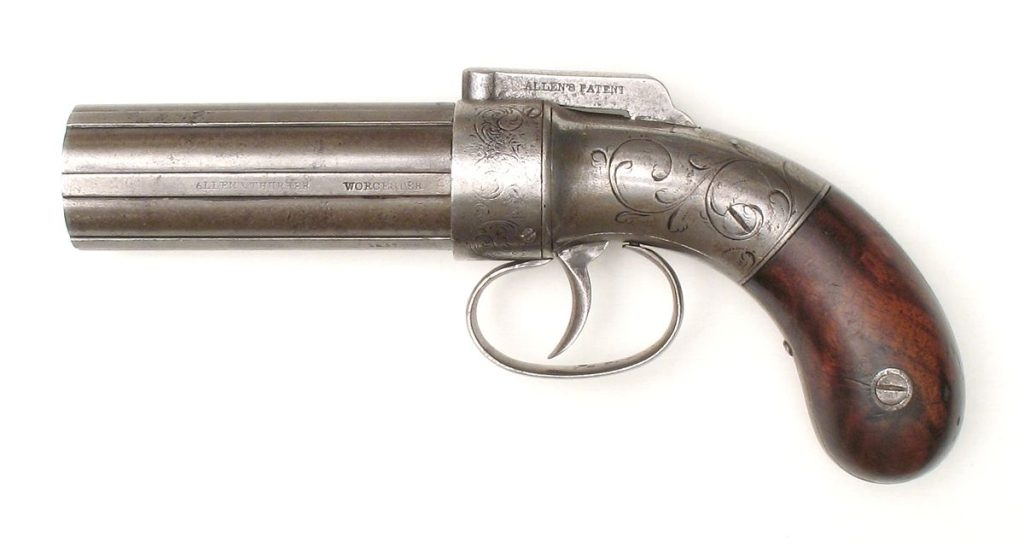
The pepperbox picked up speed in the late 1700s and rode the coattails of two-barrel turnover pistols. If two barrels is good, then even more barrel is better, right? Gun makes like Nock, famed designed of the massive volley musket, designed several rotating barrel pistols as did gunmakers in Belgium.
The Impact of the Pepperbox
These early models were flintlock pistols and quite expensive due to the materials and rather complicated designs in an era of handmade guns. As firearms evolved, so did these spicy little guns. They became percussion cap pistols, and when the industrial revolution came about, they became much cheaper. They became fairly popular due to the firepower they offered.
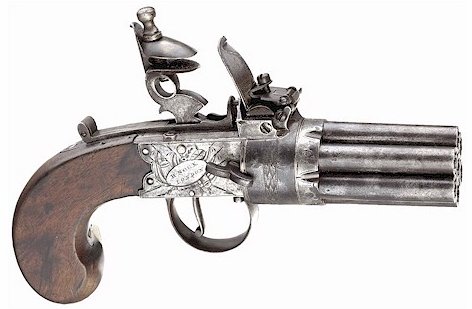
There were several design variants of percussion cap guns. Some required the user to rotate the barrels manually and to cock the hammer. Others worked like a single-action revolvers, and the barrels rotated when the user cocked the hammer. Some fired from the top barrel, and others fired from the bottom barrel.

Most were designed for civilian self-defense and for close-range use. Most were smoothbore, even though they existed in eras where rifling was common. They also lacked sight because putting a sight on each barrel would be expensive, heavy, and makes carry awkward.
That’s a large part of why they remained unissued by most military forces. While some officers may privately purchase a pepper box, they were never widely issued. They remained an affordable multi-shot weapon for civilians to defend themselves.
The Decline of the Pepperbox
Once Samuel Colt and his Colt Paterson revolver came to life, the pepperbox was done for. The revolver was much lighter, could feature a sight, and actually took less material to make. They were the future, and revolvers were the first step toward the decline of the pepper box. Then metallic cartridges came out and really snuffed ‘em out like a smoker with a cigarette butt.
After that, the main appeal became affordability. Market demand and all being what it is, the price dropped, and they remained a popular budget option for repeating firepower. Although, I’m convinced nothing in the gun world stays dead forever.
The Modern Pepperbox
There are a few cartridge pepper box designs. Remington made the Zig Zag derringer in 1860 as a six-barrel rimfire cartridge pistol. We also have guns like the Shatuck Unique and alter the Mossberg Brownie, which featured four barrels and a rotating firing pin.
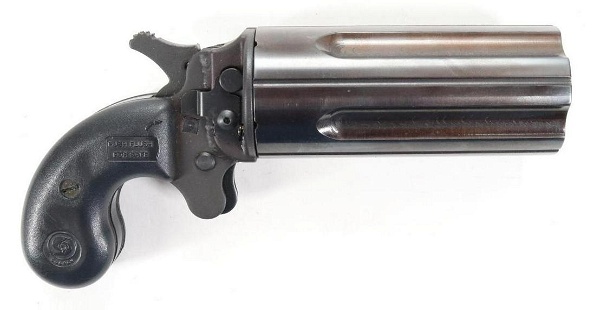
Fast forward, and Cobray produced a .45 Colt/.410 Pepperbox because, of course, they did. The COP derringer could also be considered a pepperbox. However, anything beyond novelties and replicas isn’t common these days.
The Pepper Box remains an interesting piece of firearm history, especially as a part of repeating firearms history. While seemingly unusual, they were popular for a time, and their production hastened the development of the revolver, which we still use to this day.


